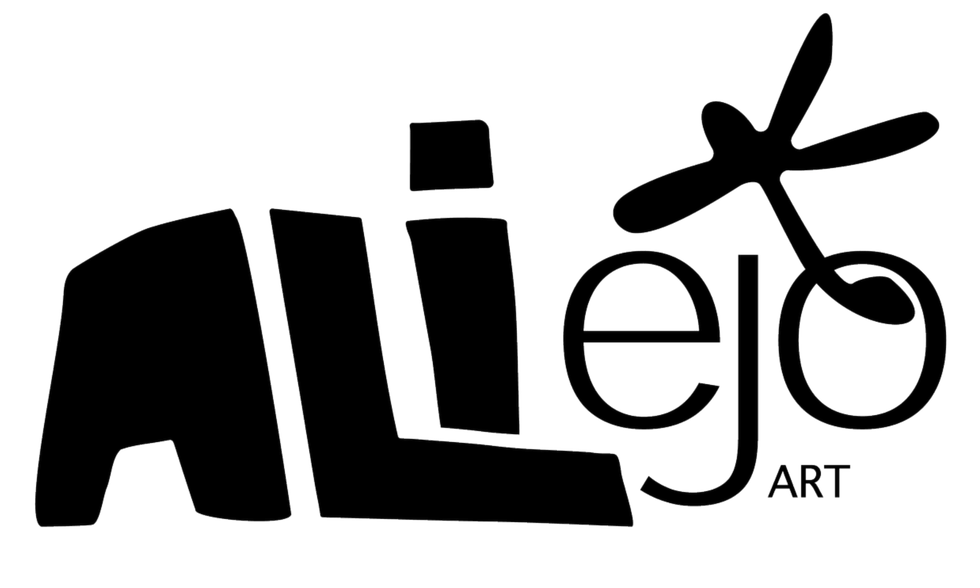
Bauhaus is a big name that has become a famed term within the art and design field. A revolutionary movement that aimed to re-invent design education but in the process left the world with completely new innovations and ways of seeing.
The Bauhaus school founded by Walter Gropius in 1919 was an institution developed from the ashes of a post WW1 Weimar Germany; at this point plagued by economic turmoil and general social disorder. Creative thought patterns needed to arise to allow for re-invention and build new foundations that this society could feed off of. Gropius was this incubator. The power of art and design the vehicle.
Gropius bred a space intended to be a saturated hub of artists and designers all under one contained roof exploring a range of disciplines; a perimeter perfect to invite collaboration and for the infusion of disciplines merging into another. In my opinion, the Bauhaus school holds all the values artists should breathe in terms of openness both to the exposure of art forms and active discussion with the people that do them. Alliances in art are everything.
A public disclosure in the form of a Bauhaus Manifesto illuminates Bauhaus’s pursuit from the perspective of founder Walter Gropius himself. Some of the lines such as ‘For there is no such thing as ‘art by profession’ (Gropius, 1919) may seem a bit dampening originating from someone who is aiming to build a culture of creativity; but under the context of the statement as a whole the line becomes sympathetic. ‘The artist is an exalted artisan’ (Gropius, 1919) An artist stems from being a high level craftsman; we build the knowledge of technical skill to then evolve the expertise into something of expression. Without a baseline of fundamental knowledge how is the artist supposed to expand and burst to exert informed work. Maybe it is wrong to state that the terms craftsman and artist are entirely interchangeable and maybe I am going against the whole Bauhaus manifesto by making such a comment- but binary they are certainly not. The actions behind the role of craftsman and artist amalgamate at points of process, thought and action. The separation between them thus blurs, and ‘there is no essential different between the artist and artisan’ (Gropius, 1919)
Then who become the captains of this renovation of thought and inhibitions? Teachers at the Bauhaus were great artists in their own right. Paul Klee, Wassily Kandinsky and Oscar Schlemmer (Christie’s 2019) are probably the most notable. All were innovators. All brought something to the table that could expand the minds attending Bauhaus according to the ways the manifesto set out. I believe having active practitioners behind teaching makes a huge difference to the ecosystem of art and design between generations, as well as on a individualistic basis. Evolution of everything through blending decades and timelines; learning from the past to apply to the present. Nourishing between old and new. No one in the ping pong match of teaching and learning should be collecting dust: inspiration and innovation drives us forward. I think this is something that was prominent within the Bauhaus and what drove its popularity to gain students, of which some migrated to reach this particular education.
I think the biggest manifestation of the Bauhaus was not its influence on the modernist movement. Instead: its productions. This was the ultimate merging of all disciplines in a visual display that was extremely playful, inclusive and active. I’m always incapsulated by the imagery of Bauhaus productions such as Das mechanische Ballett and Das Triadische Ballett. There is something so mesmerising about it all as the visual identity of Bauhaus is interweaved and projected in a great display of: costume design; mixing with performance; mixing with architectural stage setting; mixed with product design. The Bauhaus manifesto accomplished.
You can’t ignore the effects of the Bauhaus school on the modernist movement. The idea of form follows function, minimalism with the modern materiality of steel and glass, clean lines that echo the work from angular sketches, primary colours and basic shapes. The elements of design they produced which are recapitulated by designers of today. The migration of students after the Bauhaus school came to a close is when the movement truly overwhelmed. A range of countries were unhinged from their existing preconceptions by the Bauhaus way of execution. I feel this was the success that makes its existence integral even now.
I think the biggest takeaway from the Bauhaus is its view of what it means to educate a practitioner to become comprehensive for informed application. Foundation courses have continued to be relevant since Gropius’ spawn of the first course of its kind. Under his holistic methodologies the idea of hands on learning prevailed to produce education within the workshop rather than theoretical learning distant from it.
A project doing this reflecting such ideals is Grymsdyke farm that I think is setting the tone for other institutions educating art and design. I was introduced to their work via the London Design Festival in which they exhibited work completed by students who practiced on the farm, located in Buckinghamshire, under a four week residency programme. The work was bursting with a sense of liberation and encouragement of physical play with material. A beautiful emphasis on keeping a sense of process within the visual identity was a central point of the outcomes which can only be allowed for if the students are involved pro-actively with process. According to their website ‘Grymsdyke Farm is a research facility, experimental fabrication workshop, and live-work space’ ‘it has been hosting workshops, seminars and residencies with the aim of exploring the essential connections between materials, processes of design, and place.’ (Grymsdyke Farm)
Working alongside established designers to learn through the tangible rather than remaining in the world of theory and distance. A playground for experimentation. I think Grymsdyke Farm is a place Gropius would have advocated for.
Bauhaus is so much more than a mere influence, it was a revolution for a new way of pursuing practice. A central hub for change and advancement: which is ultimately what art and design is all about. I think spaces such as Bauhaus and Grymsdyke farm who focus on hands on learning must be injected into other institutions which are educating art and design as I feel like practicality is lacking in teaching methods.

References:
Christie’s (2019) Masters of the Bauhaus — the great artists who taught. Available at: https://www.christies.com/en/stories/artists-as-teachers-at-the-bauhaus-46b8fa3cc9a149178c6d2bc26ebca1cb (Accessed 18 September 2024)
Gropius (1919) Bauhaus Manifesto Available at: https://bauhausmanifesto.com/ (Accessed 18 September 2024)
Grymsdyke Farm Available at: https://www.grymsdykefarm.com/about/ (Accessed 24 September 2024)
Fels world: a website showcasing some of the work produced on Grymsdyke farm: https://www.fels.world/
Documentaries that informed my background knowledge:
Further reading on Bauhaus’ influence from the perspective of others:
Commentaires